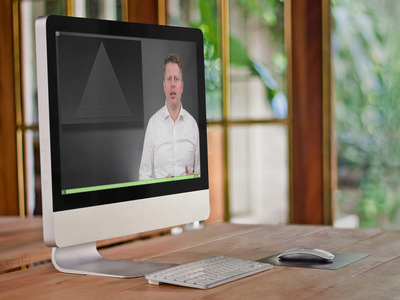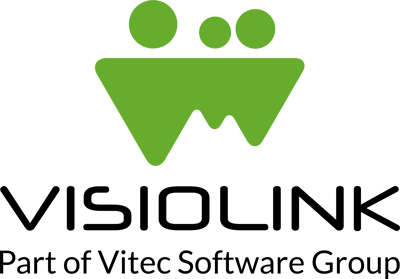For you who want the possibility to share our video insights, we also offer them here in the blog in pure text for you to read and share.
This transcript is of the presentation Kenneth Boll, our CEO, did at Mediafacts National Publishing Day on 26 November 2014. The title of the presentation is “5 Strategic Values for Digital Transformation”.
Do you agree on the outlined strategy options?
Click the image below to view the webinar on Digital Transformation.
— Start of transcript -
Hi, and welcome to 5 Strategic Values for Digital Transformation.
Let’s begin by remembering that today we have the exact same opportunities that we did in the 1950s. People are traveling from home to work, have a lot of time to consume, and in the 1950s, by train this was news consumption by print platform.
Today the platform is digital. Some of the largest newspapers like Financial Times or the Guardian have been investing a lot in the digital transformation and they’ve succeeded and succeeded very well.
But I actually have three questions for you today. First of all, and when using this inspiration from some of the largest newspapers, let’s see if we can meet just a few of the criteria that they have in their everyday.
- First question, do you have a million euro budget to spend on your transformation?
- Do you have a global strategy or even a global Audience
- and what about a dot com domain with multiple choices for language on your website?
The paradigm here is that we should think national, regional, and local. It’s OK to get the inspiration from Financial Times, the Guardian and so on, but let’s face it. When we get back, it’s about what happens in our country, in our region, in our local community.
Often we start by thinking about what should we do and how should we do it. This takes us to discussions about
- What kind of platforms should we choose?
- What kind of marketplace should we be in?
- Should we have social media integration?
- Should it be HTML5 technology?
- Should it be native technology?
But all of it is irrelevant if we do not start with the most important point– the reason why. The reason why our audience should buy our products, should spend time consuming our news digitally on the train or any other kind of transportation from home to work.
It’s basically to compare the why with some of the most basic needs in the human environment today. Like Maslow’s Hierarchy of Needs, we could also in the media industry define our hierarchy of needs to ensure that our digital transformation is as good as possible.
Let me give you a tip to digital transformation. You should explore elsewhere, don’t just look to your own industry for ideas. Many other industries are fighting for reader attention, just like we are.
Take, for instance, Netflix and Spotify. First of all, those two services have been focusing on one specific product. Netflix on movies and series, and Spotify on music. As a paper, we have our core competence in producing journalistic content.
But at the same time, we also have a TV Guide, a weather report. We have gaming. We have classifieds. We have a lot of things, Including newspapers, that we are not now the best at doing.
If you’re looking at prices and value for money, Netflix and Spotify are far lower than an average national paper cost in the Netherlands today. Netflix by a fixed amount of nine euro per month, Spotify ten euro. And a newspaper in the Netherlands costs an average of 30 to 40 euro per subscription.

So let’s look at the media industry’s hierarchy of needs.
Whatever you do, however you do it– no matter whether it’s HTML5 or native technology or platform– you should always provide high quality and stability. In our digital transformation, it’s very important to make sure that when we have new readers transformed, they experience a product that is stable and of high quality.
Secondly, reaching anyone, anywhere, on any device. If we look at Netflix, they have a product where I can consume it on any device– mobile, tablet, or television. And even so, if I start to watch a movie or series on my television, I pause it, I switch to my iPad, it remembers the exact same spot where I paused it This is as high usability. This reaching me wherever I am as a consumer.
Thirdly, when talking about digital transformation for a newspaper and an e-paper product, we need to make sure that it’s integrated with existing businesses. You have a lot of social media industry, you have a lot going on in your website, and you have a lot of other media channels that we need to make sure the e-paper is integrated with. When you do some social sharing or read an article in the paper, it should be easy for you to link and continue reading further on other related stories on your website, social media, et cetera.
The fourth rule is to gain insight into performance and behavior. It’s very important that we base all our decisions on data, and this is where business intelligence is a critical point to actually increasing and supporting your digital transformation.
When doing so, you can start with the fifth rule of creating new business opportunities. Once you have a stable product, you reach anyone, anywhere, you’re integrated with your existing businesses, and you have the data in place, you could start focusing on making decisions that are actually valuable to your readers and your consumers.
These five hierarchy of needs for a newspaper are also the five pillars in the Visiolink mission. Everything we do, from technology, production, sales, consulting, business intelligence, and customer care, is included in these five very important steps to digital transformation.
I hope you found the presentation relevant and inspiring to take the dialogue and discussion further with us.
Thank you very much.
— End of transcript -



